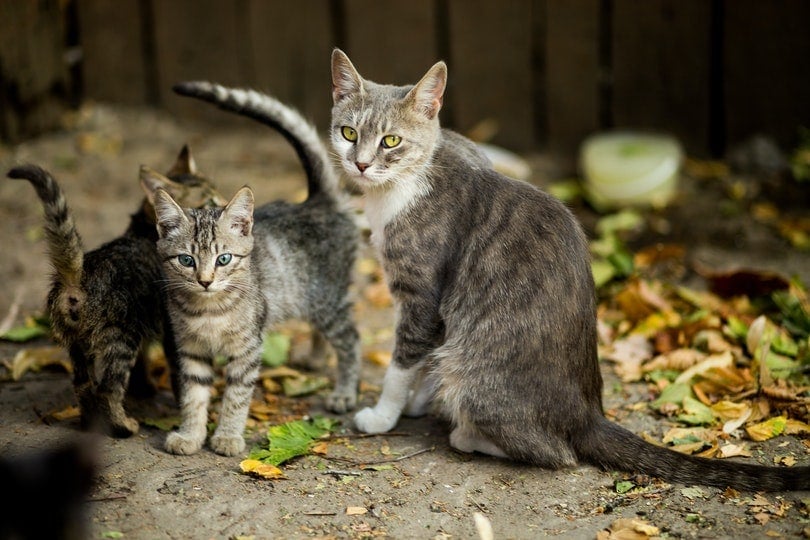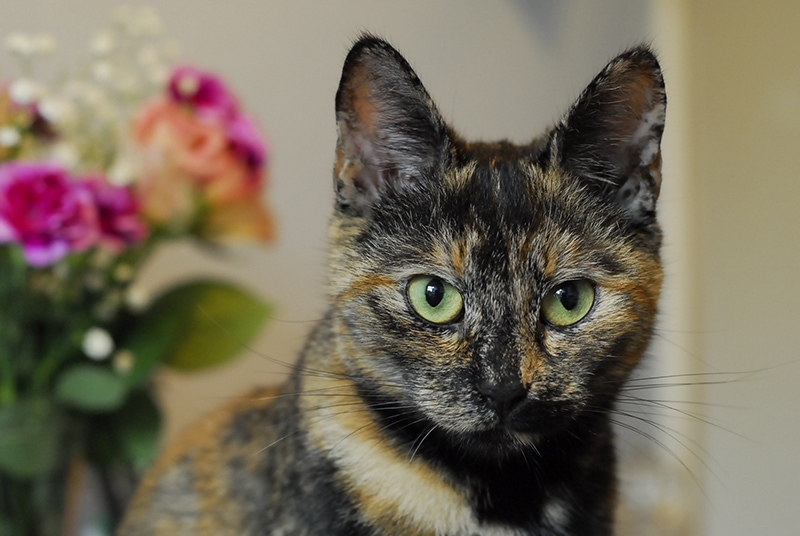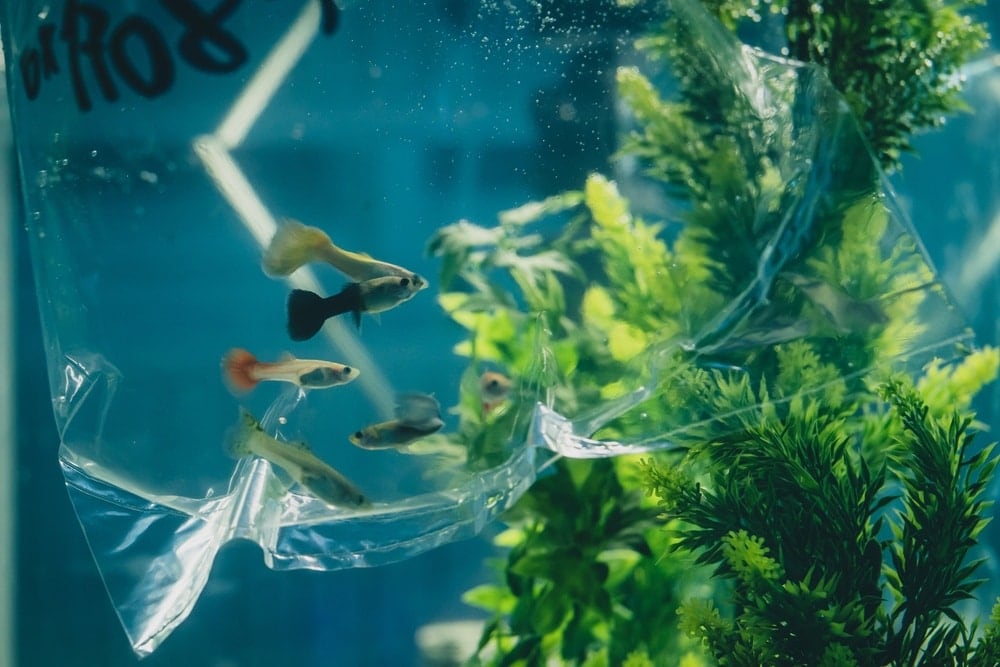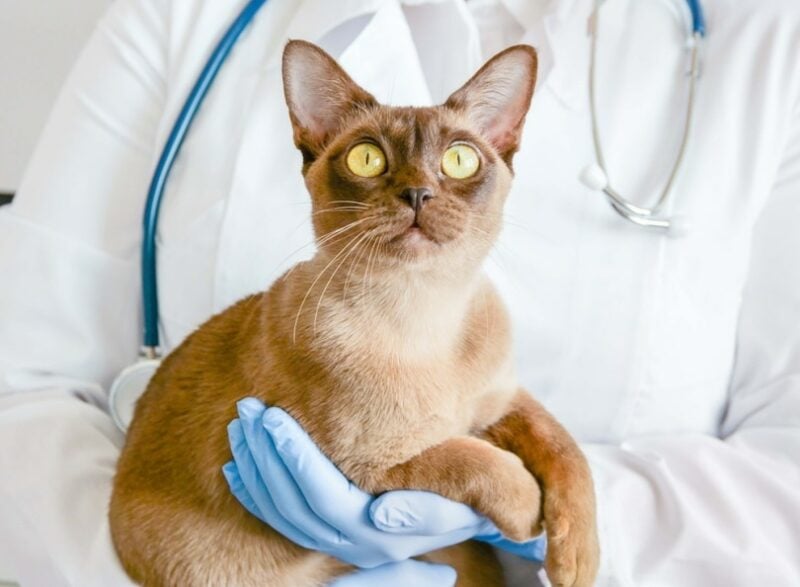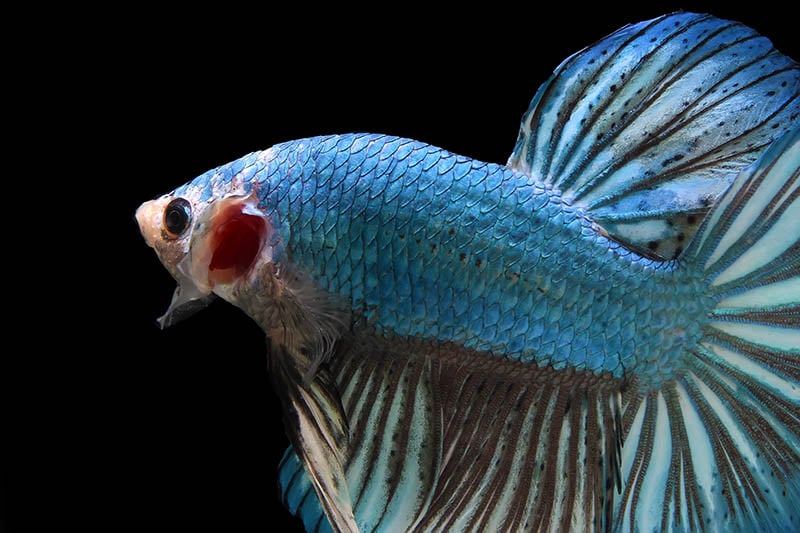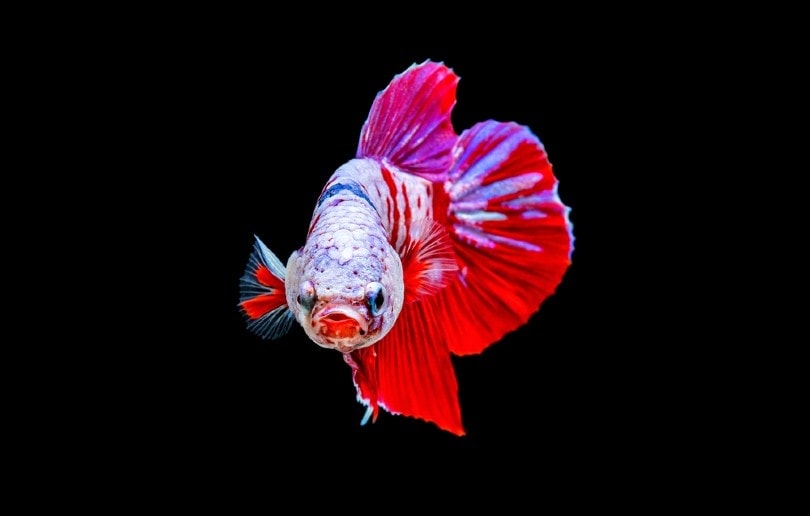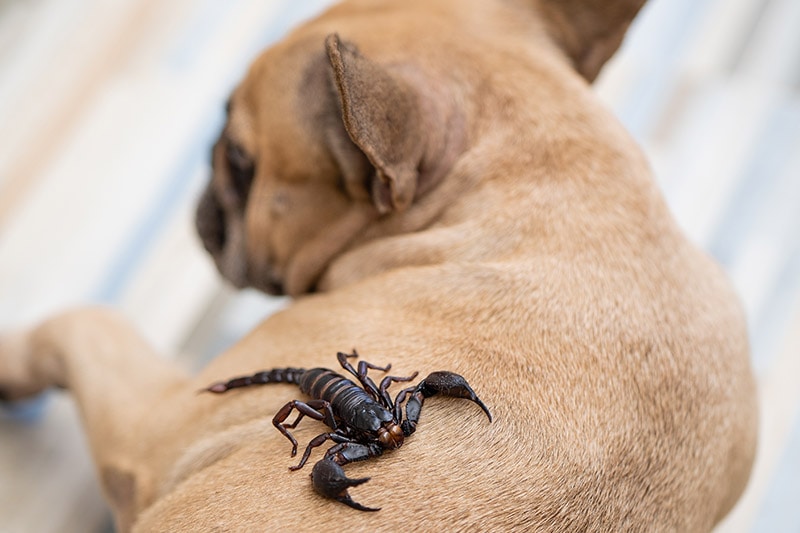Tiger Cat Breed: Info, Pictures, Care, Traits & Facts

Updated on

| Height: | 12–15 inches |
| Weight: | 8–12 pounds |
| Lifespan: | 12–15 years |
| Colors: | Brown with black stripes or orange with dark orange/red stripes |
| Suitable for: | Apartment dwellers, those with other pets, and active families |
| Temperament: | Friendly, happy, intelligent, sassy, affectionate, feisty, and a little bossy |
Let’s get one thing out of the way: When you’re looking for a pet Tiger cat, you’re not actually referring to a type of cat. Instead, you’re focusing on the coat of a cat. While a cat might have a “Tiger cat” coat, the type of cat that you’re looking at is a tabby cat.
Now, let’s dive into everything that you need to know about these adorable felines. From how much they cost to how you need to care for them, we broke it all down for you here!
Tiger Kittens
While randomly bred tabby cats are far from expensive, if you want a tabby cat with a Tiger coat, you’re not looking for a random tabby cat. So, expect the price to go up significantly. You’ll also need to do the hard work of tracking down a reputable breeder and waiting until they have kittens available.
Always double-check the parent’s medical history and check references from the breeder. The last thing that you want is to spend a ton of money on a tabby cat, only to realize that you’re not getting what you wanted or that the tabby has medical issues. Take your time to research the cat breed that best fits your lifestyle and the breeder that can offer you a healthy cat.
 3 Little-Known Facts About the Tiger Cat
3 Little-Known Facts About the Tiger Cat
1. Sometimes the Oncilla Is Referred to as the Tiger Cat
When looking for a pet Tiger cat, most people mean a tabby cat with a Tiger cat coat. But if you head down to South America, the Oncilla is often referred to as the Tiger cat.
The Oncilla is a vulnerable wild cat species that is illegal to own in many states, but that doesn’t change the fact that they’re tiny and adorable!
2. Not All Tabbies Are Tiger Cats, But All Tiger Cats Are Tabbies
Just because you have a tabby cat, that doesn’t mean you have a Tiger cat. But if you have a Tiger cat, then you have a tabby. Many tabbies have a unique striped appearance that earns them the Tiger cat moniker.
But a tabby cat doesn’t need to have the Tiger-striped appearance, so the two aren’t one and the same.
3. Tiger Cats Are Extremely Social
If you have a home with more than one pet, a Tiger cat can be a great addition. They love hanging out with humans and other pets, and they’re among the most outgoing cats out there.
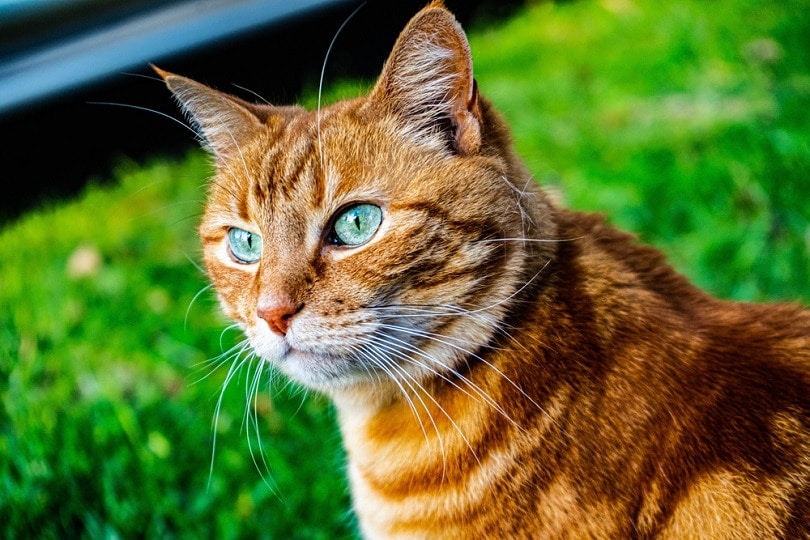
 Temperament & Intelligence of the Tiger Cat
Temperament & Intelligence of the Tiger Cat
There’s a reason that tabby cats are among the most popular pet cat breeds in the world, and those with a Tiger cat coat are no different. They’re extremely outgoing and friendly. They generally have a happy demeanor and are a bit more trusting than many other cat breeds.
Just be aware that most tabby cats have a strong, sassy, and independent streak. They might want to play with you, but they typically want to do it on their own time. They can also come off as a little bossy because they want what they want only when they want it.
Tiger cats will push the boundaries and try to get away with whatever they can, but to many owners, that’s just a part of their charm!
Are These Cats Good for Families? 👪
Yes! Tiger cats are extremely good for families. Whether you’re in a home with older children or you have babies and toddlers just getting a firm footing on the world, a Tiger cat makes a great addition to the home.
They’re nimble enough to get out of the way when children stumble and fall, but they’re outgoing enough that they can handle clumsy hands trying to figure out things. Just remember that you should always supervise interactions between pets and small children.
Does This Breed Get Along With Other Pets?
While the Tiger cat might have Tiger in their name, that doesn’t mean they have the same aggressive steak that Tigers do. Most Tiger cats are extremely good around other cats and dogs, but you need to be careful with them around smaller pets.
Tiger cats still have the predatory instincts of wild cats, which means they’ll go after rodents, lizards, fish, and other small pets. That said, you shouldn’t have any problem with Tiger cats and traditional large pets.
https://www.instagram.com/p/CobL8dFyadx/?utm_source=ig_web_copy_link
 Things to Know When Owning a Tiger Cat
Things to Know When Owning a Tiger Cat
Before you head out and purchase a Tiger cat, there are a few basic care requirements to be aware of. Nothing about caring for a Tiger cat is all that surprising, but it’s best to have a thorough understanding of everything that you need to know before bringing one home.
Food & Diet Requirements 🐡
The Tiger cat is a tabby cat at heart, so they don’t have any unique dietary requirements. Depending on your Tiger cat’s size, you should feed them between ½ and ¾ cups of high-quality kibble each day.
You can supplement this with the occasional wet food and treats, but as long as you’re giving them a complete cat food, those are not necessary.
Just don’t skimp by giving them lower quality food. While it might save you a few bucks up front, you’ll only end up spending more in the long run on medical bills, and you might shorter your Tiger cat’s lifespan in the process.
Exercise 🐈
While the Tiger cat might not be the most energetic cat breed out there, that doesn’t mean they don’t need to get moving every now and again. We recommend giving them interactive toys and spending time playing with them.
Still, they aren’t the most energetic cat breed out there, and you can expect that they’ll spend a decent amount of time just lounging around relaxing and taking naps.
Training 🧶
If you’re trying to train your cat to use the litter box, stay out of the kitchen, and only scratch at scratch posts, it’s not too challenging. Anything else, though, and you’re fighting an uphill battle.
Even keeping them out of the kitchen can be a major challenge if you’re not around. The Tiger cat is an extremely intelligent cat, but they’re also independent and feisty and like to pretend that they rule the roost.
If you convince them that it’s something that they want to do, it’s easy to train them. If they decide that they don’t like the rule and they want to do it, anyway, then it can be a bit of a challenge.
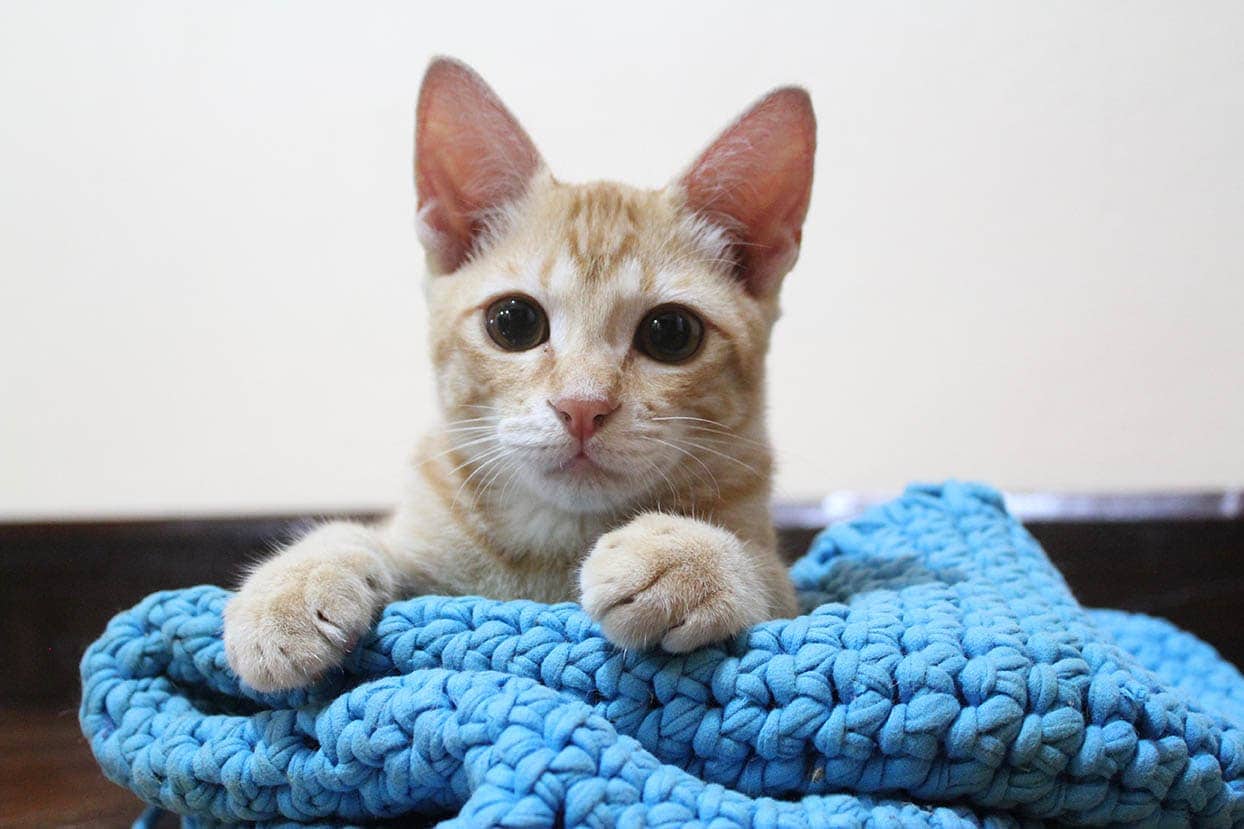
Grooming ✂️
While there are cat breeds out there that shed more than the Tiger cat, that doesn’t mean they’re a low-shedding breed. Expect cat hairs around your home, and to help keep it at bay, you should brush out your Tiger cat once a week.
Past that, you might need to trim their nails if they don’t use a scratch post, and you need to brush their teeth a few times a week. They might not like the teeth brushing at first, but they should get used to it. Since these brushings can save you thousands of dollars in vet bills down the road, we highly recommend getting started as soon as possible!
Health and Conditions 🏥
Since there are so many tabby cats out there, genetic diversity helps keep many health conditions at bay. It also opens up plenty of options for breeders to breed healthier cats.
Therefore, serious health concerns in tabby cats are quite rare. Still, if you notice any of the following problems with your Tiger cat, you need to take them to a vet as soon as possible to see what’s going on.
- Urinary tract problems
- Allergies
- Sensitive stomachs
- Obesity
- Parasites
- Hypothyroidism
- Renal failure
 Male vs. Female
Male vs. Female
While there might not be that many differences between male and female Tiger cats, there are two that we’d like to highlight here.
First, male Tiger cats tend to be a little larger than their female counterparts. It’s far more likely that you’ll have a male Tiger cat pushing the 15-inch and 12-pound mark than a female. So, if you want a slightly larger Tiger cat, go with a male; if you want a smaller one, go with a female.
Second, males tend to be a little more affectionate and need more attention than females. While both cats will seek your attention, typically, a male needs more of it. While much of this will come down to your individual cat’s personality, genetics and sex play roles too.
 Final Thoughts
Final Thoughts
Tiger cats are among the most adorable and striking cats that you can add to your home. But they’re also among the more expensive options out there. If you’re looking to add a Tiger cat to your home and have the money to spend on one, go ahead, but if you’re on a tighter budget, you might want to opt for a regular tabby. You’ll get the exact same temperament and experience, the only difference being the physical appearance. It’s up to you how much you’re willing to spend for a cat’s appearance alone.
Featured Image Credit: Cressida studio, Shutterstock

 3 Little-Known Facts About the Tiger Cat
3 Little-Known Facts About the Tiger Cat Things to Know When Owning a Tiger Cat
Things to Know When Owning a Tiger Cat

